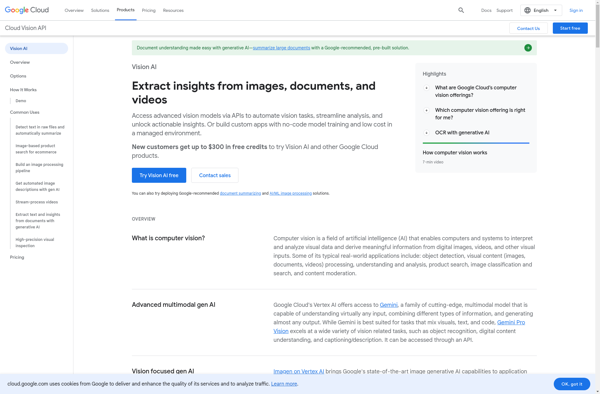Roboflow

Roboflow: No-Code Computer Vision Platform
Annotating, preprocessing, and managing datasets for machine learning without writing code, Roboflow allows you to upload images, draw bounding boxes, and export labeled datasets.
What is Roboflow?
Roboflow is a no-code computer vision platform designed to help machine learning engineers streamline the dataset preparation process for training deep learning models. It provides a suite of tools for annotation, data management, augmentation, and export, eliminating the need to write tedious data preprocessing code.
Some key features of Roboflow include:
- Image annotation - Draw bounding boxes around objects of interest to label datasets for object detection and instance segmentation tasks.
- Video annotation - Annotate frames in video datasets for motion tracking or action recognition.
- Data organization - Roboflow includes a dataset management system to version, search, and collaborate on annotation projects.
- Automated transformations - Apply common image augmentations like crops, flips, and color jittering to expand dataset diversity.
- Formatted exports - Export labeled datasets in formats tailored for popular ML frameworks like TensorFlow, PyTorch, Keras, and more.
- Integrations - Roboflow connects directly to cloud services like Google Drive and AWS S3 for storage and compute.
- Collaboration tools - Features like user management, comments, and task assignment streamline teamwork.
- On-premise options - For extra privacy, Roboflow offers self-hosted licensing to keep data in-house.
The easy-to-use UI and automation make Roboflow well-suited for no-code teams and solo practitioners to accelerate computer vision deep learning workflows.
Roboflow Features
Features
- Image annotation
- Dataset management
- Preprocessing pipelines
- Model training
- Model hosting
- Collaboration tools
Pricing
- Freemium
- Subscription-Based
Pros
Cons
Official Links
Reviews & Ratings
Login to ReviewThe Best Roboflow Alternatives
Top Ai Tools & Services and Computer Vision and other similar apps like Roboflow
Here are some alternatives to Roboflow:
Suggest an alternative ❐Computer Vision Annotation Tool (CVAT)

Google Cloud Vision API

Amazon Rekognition
